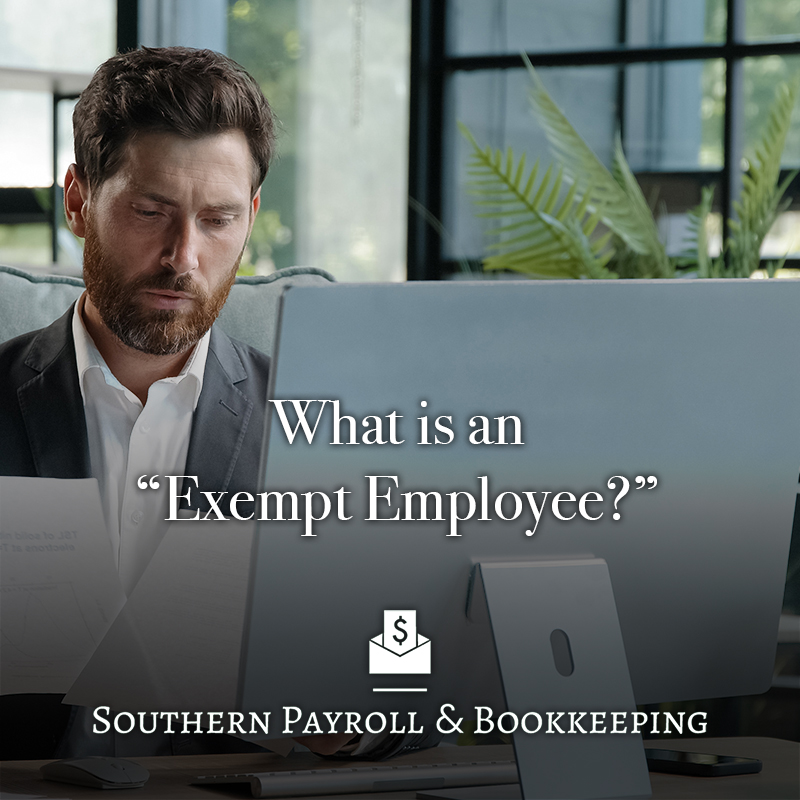Several weeks ago we detailed some of the changes that the Department of Labor started implementing this summer with regard to exempt employees. That article ended up with a renewed interest from our clients asking, “What exactly constitutes an exempt employee…and what are they exempt from?”
Who Defines This?
We’ll start with the basics…who makes the rules? The classifications of employees as exempt or non-exempt was defined in the Fair Labor Standards Act (FLSA), originally passed in 1938. It’s the same law that created the minimum wage and overtime pay, as well as outlawed “oppressive child labor.”
Exempt (or non) classification determines how an employee gets paid, whether or not they must be paid overtime rates, and the nature of their job responsibilities. Employers need to have a firm understanding of these factors to ensure they stay in compliance with labor regulations.
Exempt
Simply put, exempt employees are “exempt” from the provisions of the FLSA that require overtime pay…they do not have to be paid time-and-a-half for any hours of 40 in a work week. To be classified as exempt an employee has to meet three criteria.
- Salary Level. This is one of the details that changed as of July 1, 2024…exempt executive, administrative, and professional (EAP) employees must be paid at least $844 per week, a total of $43,888 per year. On January 1, 2025, that amount increases again to $1,128 per week ($58,656 per year). Also important to note is that starting July 1, 2027, the new rules will implement automatic updates to the minimum salary levels. These updates will happen every 3 years and employers will get at least 150 days’ notice.
- Salary Basis. If defined as exempt, an employee must be paid a predetermined, fixed amount as salary. This amount cannot be reduced based on the quality or quantity of work performed. This is basically an assurance of a consistent paycheck amount, no matter how many hours the employee has worked.
- Job Duties. There are several categories for exempt employees, which include the aforementioned executive, administrative, and professional, but also extent to computer and outside sales employees. Every category has specific duties tests that have to be met. Commonly, exempt employees include higher levels of responsibilities in their duties, they maintain more decision-making authority, and have specialized expertise.
Non-Exempt
If exempt employees are exempt from having to be paid overtime, it’s easy enough to guess that for non-exempt employees you must pay them overtime for any hours worked over 40 in a work week. That rate must be at least one-and-a-half times their regular hourly rate of pay. Other ways to identify non-exempt employees are:
- Hourly Pay. In general, non-exempt employees are paid on an hourly basis and will earn a salary below the FLSA’s salary threshold. Their compensation will track directly with how many hours per week they work.
- Job Duties. Non-exempt employees will usually be found performing duties that don’t fall under the exempt categories: manual labor, clerical, technical support, or other routine tasks that don’t require specialized training or managerial responsibilities.
Employer’s Responsibility
No matter how many exempt and non-exempt employees you may have, as an employer you have responsibilities to both. You must keep accurate records of hours worked by the non-exempt employees so they receive the proper overtime pay. Quite a few employers have run afoul of this requirement over the years and they are often penalized harshly.
If you misclassify employees, it can also lead to legal and financial penalties for you. Make sure to classify everyone properly so you can stay in compliance with federal labor laws, as well as the laws of your state and local governments. You’ll be protecting your employee’s rights…and your own good name and bottom line.

